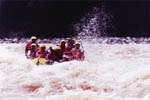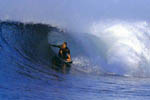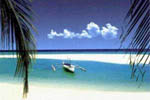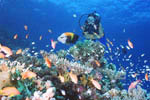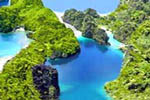| Whenever Manila is mentioned, the speaker actually refers--sometimes unknowingly--to a vast conglomeration of 12 cities and 5 municipalities. Each is an autonomous political entity, but together functioning as one city called Metro Manila (The National Capital Region of The Philippines). Welcome to Metro Manila, the political, economic, social, educational, cultural and recreational hub of this vast archipelago of 7,107 islands that is The PHILIPPINES. Nowhere else in the country can the visitor acquire a greater dose of local color, a better understanding of the country's multifaceted culture, or as many glimpses of its contrasts as in this pulsating, vibrant metropolis. The streets are alive with colorful jeepneys, rumbling buses and sleek automobiles. In old sections of Manila like Intramuros (the old walled city) and Chinatown, clip-clopping horse-drawn carriages pick their way through traffic. Glass and concrete towers rise side-by-side with Spanish colonial houses and neo- classical government buildings. Dragon arches, gold-domed mosques and elaborately-styled mansions define the enclaves of the Chinese, the Moslems, the rich and famous. Outside the civilized bustle of air-conditioned shopping centers, sidewalk vendors haggle and press with the sweaty, hurrying crowds. The glare and gaiety of marketplaces are mere steps away from the peaceful greenery of parks and the hushed silences of churches. Premier gateway to the many islands and tourist destinations north and south of the Philippines, Metro Manila has its own share of attractions to suit every interest. Here, churches, museums and theatres vie for the attentions of history and culture buffs. Malls, boutiques, flea markets and antique shops offer endless surprises for shoppers and souvenir-hunters. Posh restaurants and sidewalk eateries entice gastronomic adventurers. Snazzy discos and cozy bars entertain the night owl. Golfing greens, country clubs and accessible out-of-town resorts provide recreation and relaxation for all. And everywhere, a friendly, festive people who smile readily, adore music and love to welcome visitors with their world-famous brand of hospitality. Getting There: Manila is an international gateway city. The Ninoy Aquino International Airport, seven kilometers from the city center, services 26 major international airlines as well as charter flights from Japan, Hong Kong, Taiwan and other countries. Its has adequate facilities such as duty-free centers, tourist information counters, hotel and travel agency representative, banks, postal services, car rental and chartered flight services, a medical clinic and a baggage deposit area. Philippine Airlines, the official flag carrier, links Manila to 26 cities in 19 countries and provides daily service to and from 42 major destinations within the country. Manila's passenger and container ports bustle with the activities of several local and international shipping concerns. Cruise ships, as well as chartered and private vessels, find berth in the calm waters of Manila Bay. Getting Around: When in Manila, get around as the Manile�os do via the colorful, ubiquitous jeepneys. These "kings of the road" not only get you almost everywhere around the city on a minimal fare, they also provide insights into the Filipino psyche and allow a liberal glimpse of pop art. Otherwise there are the buses, air-conditioned or not, which ply the wider, oft-traveled routes like Epifanio de los Santos Avenue (EDSA), the major artery which cuts through the metropolis and connects important points from Monumento in the north to Baclaran in the south. Some buses go as far north as Novaliches and as far south as Alabang and Muntinlupa. The Light Rail Transit (LRT Line 1) and Metrostar Express (MRT Line 3) runs overhead along Taft Avenue and Epifanio de los Santos Avenue (EDSA) respectively, Megatren (LRT Line 2) along Pasig, Marikina, Quezon, San Juan and Manila, cutting through traffic and stopping pre- designated stations along the way. The Metro Train plies the rail route from Tutuban in Manila to as far southward as Cavite Province; while the Metro Ferry cross the Pasig River from Escolta, Manila to Guadalupe, Makati. Taxis about along major streets and within commercial and business centers. Tricycles (motorcycles with side cars) and pedicabs (bicycles with side cars) service narrow roads and inner city alleys. In sections of Manila like Binondo in Chinatown and Intramuros, Kalesas or horse-drawn carriages plod through traffic, carrying passengers and goods. If the preference is for ease and comfort car rental companies offer competitive rates based on mileage or day rates. |
| White Water Rafting |
| Scuba Diving |
| Tropical Beach Paradise |
| Surfing |
| The PHILIPPINES is the beach capital of Asia. Philippines Great Hideaways includes Aerial Sports (skydiving, ultralight aircraft, and hot-air balloons), Board Sailing, Caving, Mountain Biking, Rockclimbing, Sea Kayaking, Surfing, Trekking, Scuba Diving, and White Water Rafting. |
